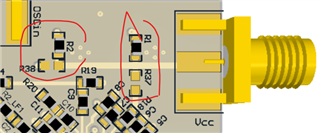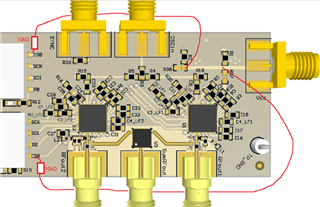Other Parts Discussed in Thread: LMX2594, , TIDA-01410
I have the LMX2594PSEVM, which contains two LMX2594 synthesizers and therefore two RFout SMA connectors. However, When ever I program one synthesizer (Turning off the switches of the other synthesizer), the other one provides the same RFout frequency (As if they always have to be programmed to provide the same outputs)!
I need to generate two different signals; one at 4GHz and the other at 4.4 GHz. Do I need to modify the connections of the board to achieve this goal or is it possible with the provided connection of the LMX2594PSEVM to get two different output frequencies?
Thank you
Mohammad Alafari



